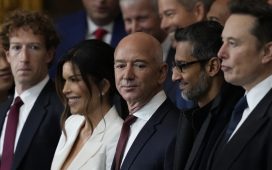Invezz.com –
John Lewis has reported progress in its efforts to revive its struggling business, with its losses nearly halved over the first half of 2024.
The retail group, which includes John Lewis department stores and Waitrose supermarkets, posted a loss of £30 million, down from a £59 million deficit during the same period last year.
This improvement follows the company’s recent transformation plan aimed at tackling challenges in a tough retail environment.
Despite the progress, John Lewis warned that the outlook for consumer spending remains uncertain.
The company’s department stores experienced a 3% decline in sales, citing the impact of reduced disposable income and unseasonal weather.
Meanwhile, Waitrose, the supermarket arm of the partnership, saw revenue growth of 5%, bolstered by new store openings and increased customer engagement.
Transformation plan brings significant improvement
Nish Kankiwala, CEO of the John Lewis Partnership, described the results as a clear indication that their strategic transformation is yielding positive results.
These results confirm that our transformation plan is working, and we expect profits to grow significantly for the full year.
The company expects to see an improvement from the financial performance of two years ago, despite challenges in the broader retail landscape.
Kankiwala acknowledged, however, that the retail environment remains difficult, particularly for the John Lewis department stores, which faced reduced demand in fashion due to tighter customer budgets.
The well-documented squeeze on customers’ disposable income, along with unseasonal weather, has weighed on fashion sales.
Waitrose outshines John Lewis with strong growth
In contrast to the department stores, Waitrose has been a driving force behind the partnership’s improvement.
The supermarket chain reported a 5% rise in sales for the half-year, benefiting from strategic initiatives such as the opening of its first in-store outlet from Gail’s Bakery and the expansion of its convenience shop network.
The company plans to open up to 100 new convenience stores over the next five years, aiming to tap into growing demand for smaller, local grocery options.
Diana Wehrle, a retail analyst at Rendle Intelligence and Insights, said Waitrose has been the “shining light” in the partnership’s portfolio.
“The new convenience stores make sense for Waitrose, as a lot of their offering is designed in smaller portions,” she noted.
Retail challenges and strategic partnerships
John Lewis department stores faced steeper competition in the fashion sector, with Wehrle highlighting that rival Marks & Spencer has “really upped their game.”
In an effort to regain momentum, John Lewis recently reintroduced its “never knowingly undersold” price pledge.
The retailer also announced a new partnership with book chain Waterstones, which will open in its flagship Oxford Street store in London next month.
Wehrle pointed out that while these partnerships could drive more customers into stores and keep them there longer, they are “not going to significantly move the dial on sales.”
The results reflect a mixed picture for the John Lewis Partnership. While the Waitrose division is delivering growth, the challenges in fashion and competition from other retailers mean the company still has work to do to achieve full recovery.
Despite these challenges, the business remains optimistic about its long-term prospects, particularly in light of its successful transformation efforts.
Outlook for the rest of 2024
Looking ahead, Kankiwala said that the company is cautiously optimistic about the full year and expects a marked improvement in profits.
However, he reiterated that consumer spending patterns remain uncertain, which could weigh on sales, particularly in the retail space.
With ongoing investments in new stores, partnerships, and customer engagement strategies, the John Lewis Partnership is committed to maintaining momentum as it navigates the evolving retail landscape.
Whether the retailer can sustain its recovery will depend largely on how well it adapts to external economic conditions and changing consumer behaviour in the months ahead.
This article first appeared on Invezz.com







